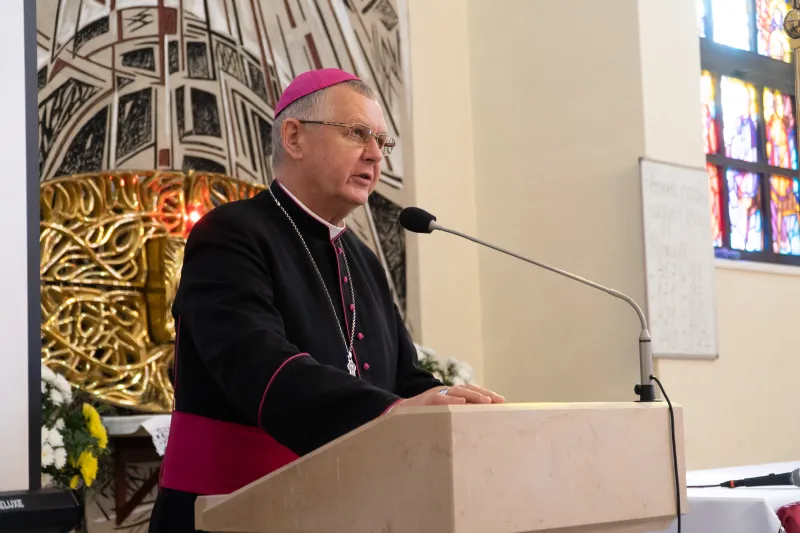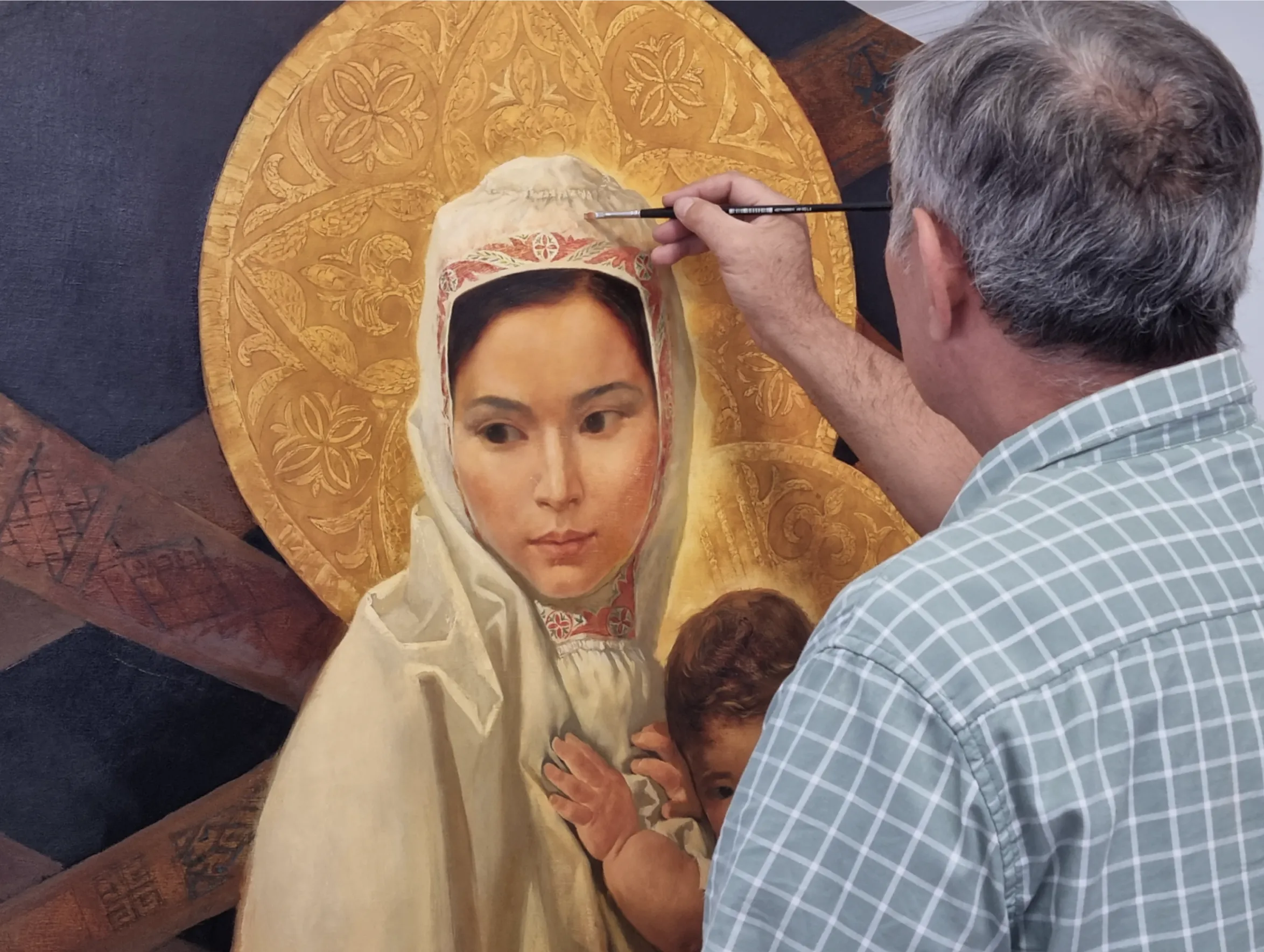
CNA Newsroom, Sep 13, 2022 / 07:46 am (CNA).
The archbishop of Kazakhstan’s only Catholic archdiocese said the visit of Pope Francis is of unique significance to the country’s tiny but diverse Catholic minority.
At the same time, the pope’s “pilgrimage of dialogue and peace” comes amid high political expectations in a time of war and global crisis, Archbishop Tomasz Peta told CNA in an email interview Sept. 11.
Pope Francis is visiting the large, landlocked Asian country Sept. 13–15 for an interreligious meeting.
He is the second pope to visit the country — St. John Paul II visited there in 2001 to an enthusiastic welcome. Two years later, the Polish-born Peta, who has served in Kazakhstan since 1990, was appointed archbishop of the Mary Most Holy Archdiocese in Astana, the capital that currently is called Nur-Sultan.
Asked about expectations for the pope’s visit, the 71-year-old archbishop said: “The global situation in the context of the war in Ukraine is tragic. It seems that there is no solution in purely human terms. The Holy Father is coming to Kazakhstan in the name of Christ, as a messenger of unity and peace. We do not count on political solutions, but we believe in a miracle, because God’s strength is different from human strength.”
A robust Church with a future
There are said to be about 250,000 Catholics living in Central Asia’s largest country, accounting for a mere 1% of the total population. Nevertheless, Peta said, the Church there is very robust.
“Kazakhs are open to life, which is why the churches are filled with children and young people,” he said. “If there are children, we have a future. We see this future in Kazakhstan and in the Church.”

Kazakhstan is home to approximately 130 nationalities; 70% of the population are Kazakhs, 20% are Russians, and the remaining 10% are made up of other nationalities.
The archbishop of Nur-Sultan told CNA: “In the past, Catholics in Kazakhstan were mainly representatives of traditionally Catholic nations, descendants of exiles of German and Polish extraction. Many of these people left and returned to their homelands. The number of Catholics has decreased, while the Church in Kazakhstan has become more international, more widespread, and therefore more Catholic in terms of diversity.”
A fruit of St. John Paul II
The papal pilgrimage is both pastoral and political. On Wednesday, Pope Francis will participate in the 7th Congress of World and Traditional Religions.
The gathering of religious leaders is also a fruit of St. John Paul II’s pilgrimage to Kazakhstan in 2001, Peta said: “In a predominantly Muslim country, 40,000 people gathered for Mass in Mother of the Homeland Square. In his homily to the followers of many religions, John Paul II called on Kazakhstan to become a bridge between continents, countries, religions, and cultures. These words inspired then President Nursultan Nazarbayev to hold the first congress in the national capital two years later.”
The Catholic prelate told CNA the country has achieved a largely peaceful diversity of religions for profound reasons.
“One of them is history,” he said. “Kazakhstan was an ‘ocean of blood and tears,’ home to the largest concentration camps during the Soviet era. The Karaganda camp was the size of today’s France. Prisoners of different religions helped one another to survive.”
Peta told CNA: “When there was a Christian holiday, Muslims would take on the work of Catholics and Orthodox so that they could celebrate, and the other way around. This shared tragic history of the thousands of people resettled here brought nations and different faiths together.”

The second reason, the archbishop said, was the fruit of political efforts.
“In a society where there are 130 nationalities and 18 officially registered religions, the authorities are making a great deal of effort to assist the process of peaceful coexistence,” Peta said.
The role of the congress
The Congress of World and Traditional Religions is part of a whole fabric of gatherings and encounters, including regular meetings of representatives of faith communities at the local level in Kazakhstan, the archbishop explained. “These meetings at district or provincial level enable clergy and other representatives of different religions to meet and plan joint activities,” Peta told CNA.
At the invitation of the authorities, Pope Francis will participate in the congress together with 100 delegations from 60 countries at the Palace of Independence. The whole event will be televised to the public.
On the pastoral side, the pope’s pilgrimage will include two highlights. The first will be Holy Mass, open to all the faithful, on Sept. 14. As sources told CNA, it is noteworthy that, although it is a pastoral event, Kazakh state authorities helped the Vatican and the local Church with the organization.
The following day, Thursday, Sept. 15, the pope will meet with bishops, priests, deacons, consecrated persons, seminarians, and pastoral workers at the Cathedral of Our Lady of Perpetual Help in Nur-Sultan.
He will be welcomed by the president of the recently established Central Asian Bishops’ Conference, Bishop José Luís Mumbiela Sierra of the Diocese of Almaty.

Pope Francis is expected to entrust the Church in Kazakhstan and all of Central Asia to Our Lady and to consecrate the icon of the Mother of the Great Steppe, a triptych depicting the Kazakh-faced Mother of God and Child.
“This icon will in the future be installed in the shrine in Oziornoye, where the Mother of God is venerated as the Queen of Peace, the patroness of Central Asia,” Peta told CNA.
If you value the news and views Catholic World Report provides, please consider donating to support our efforts. Your contribution will help us continue to make CWR available to all readers worldwide for free, without a subscription. Thank you for your generosity!
Click here for more information on donating to CWR. Click here to sign up for our newsletter.





Leave a Reply